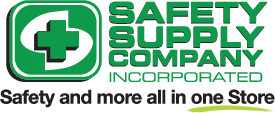Guarding Your Hands: Best Practices for Hand Safety in the Workplace

In the hustle and bustle of the modern workplace, our hands are often the unsung heroes. From handling complex machinery to typing on a keyboard, hands are involved in nearly every task. Despite their critical role, hand injuries remain one of the most common types of workplace injuries. Understanding the importance of hand safety and implementing best practices can significantly reduce these risks.
Understanding the Risks
Hands are vulnerable to various hazards in the workplace, depending on the nature of the job. Common risks include:
- Cuts and Lacerations: Often caused by sharp tools, machinery, or materials.
- Burns: Resulting from exposure to hot surfaces, chemicals, or electrical sources.
- Crush Injuries: Occurring when hands are caught between objects or in machinery.
- Repetitive Strain Injuries (RSIs): Caused by repetitive tasks that strain muscles, tendons, or nerves over time.
- Chemical Exposure: Contact with harmful substances that can cause skin irritation or more severe damage.
The consequences of hand injuries can be severe, ranging from temporary discomfort to permanent disability. In some cases, injuries can even be life-threatening if they lead to severe infections or complications. Therefore, understanding the risks and taking preventive measures is crucial.
Prevention: The Key to Hand Safety
Preventing hand injuries requires a proactive approach that includes education, proper equipment, and safe work practices. Here are some essential strategies for protecting your hands:
- Wear the Right Gloves: Not all gloves are created equal. The type of gloves you need depends on the specific hazards of your job. For instance, leather gloves protect against cuts and abrasions, while rubber gloves are ideal for handling chemicals. Ensure that gloves fit properly and are in good condition.
- Use Tools Correctly: Misusing tools or using the wrong tool for a job is a common cause of hand injuries. Always use tools as intended, and ensure they are well-maintained. For example, using a dull knife requires more force, increasing the risk of a slip and subsequent injury.
- Follow Proper Procedures: Adhering to safety protocols is vital in preventing hand injuries. This includes locking out machinery before performing maintenance, using guards and shields where necessary, and never bypassing safety features on equipment.
- Maintain Good Hygiene: Washing hands after handling chemicals or contaminants is crucial to preventing skin irritation or more severe chemical burns. Regular hand care, such as moisturizing, can also prevent dry, cracked skin that is more susceptible to injury.
- Be Aware of Your Surroundings: Staying alert to potential hazards in your environment can prevent accidents. For instance, being mindful of where you place your hands in relation to machinery or heavy objects can reduce the risk of crush injuries.
- Training and Education: Regular safety training that emphasizes hand safety is essential. Workers should be informed about the specific hazards they might encounter and the correct use of personal protective equipment (PPE).
Conclusion
Hand safety is not just the responsibility of the employer but also of every individual in the workplace. By understanding the risks, using the appropriate protective equipment, and following safe work practices, the number of hand injuries can be drastically reduced. Protecting your hands is not only about avoiding injuries but also about ensuring that you can continue to perform your job effectively and enjoy a high quality of life. Remember, safety starts with you—take the necessary precautions to protect your most valuable tools: your hands.
Blog Articles
Check out more articles
PPE: The Unspoken Love Language
Wearing PPE: Protecting Your Present and Securing Your Future
View MoreTips to Improve Safety While Working With Heavy-Duty Mobile Equipment
Improving the safety of ground personnel working around mobile equipment, such as forklifts, excavators, etc., requires a combination of engineering controls, administrative measures, and behaviora
View MoreWhy You Should Service Your Safety Equipment
Safety equipment serves as the frontline defense against workplace hazards, ensuring the well-being of employees and minimizing risks.
View More



